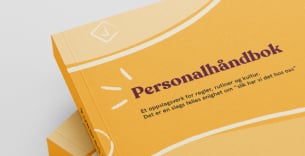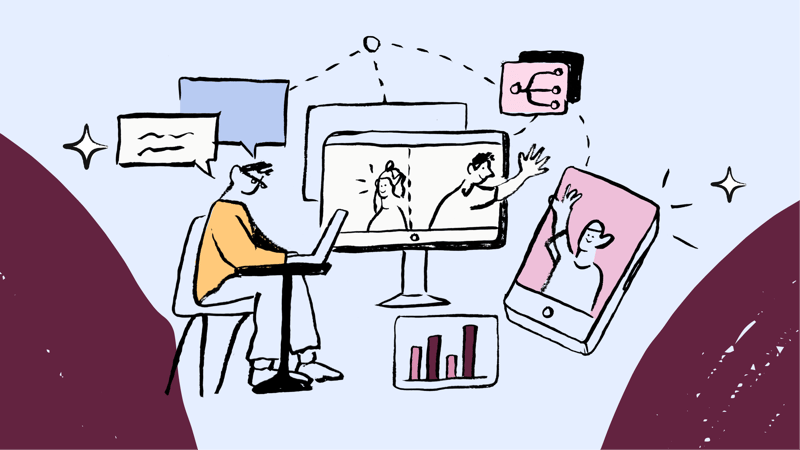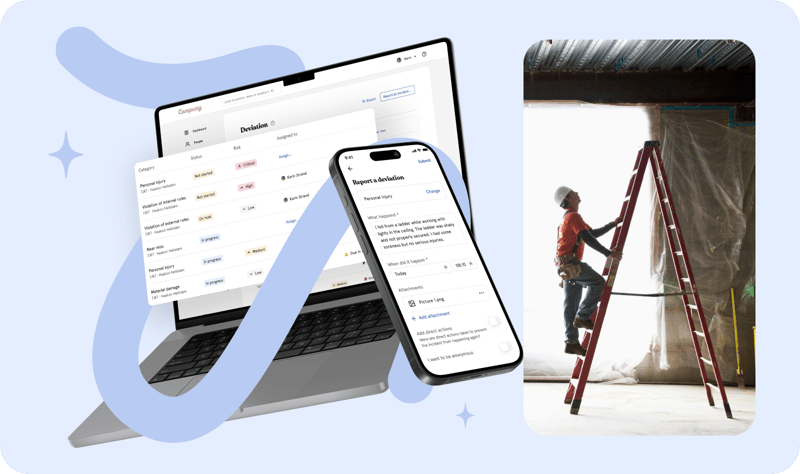How to work smarter? That’s really what’s at the heart of digitalisation! In this article, we will take a look at what digitalisation actually is and how you can use the digitalisation process to simplify your company's routines. We discuss why it is important to build a solid digital foundation when working with personnel administration and a little about how important this is in light of the GDPR legislation.
What is digitalisation? And what is digitalisation of HR?
At the most basic level, digitalisation involves transferring information from paper to digital systems. But there are more advanced ways of looking at this too. One is that digitalisation is a way of simplifying unnecessarily clunky processes and working methods. Within HR, you could say that digitalisation is about creating a strategy for more flexible administration of HR tasks. It goes without saying that the HR role is constantly developing, and expectations continue to grow that HR has the knowledge and data to help the company make wise decisions at board level. This requires a bit of smart thinking as to how HR works and which systems you rely on.
Find out what you really need!
An important job that many overlook is that it is just as important to clarify the needs of the company as it is to digitalise paper documents. Moreover, taking steps to digitalise a company is a great opportunity to take a look at how you actually work. And when the new digital tool is actually phased in, a further opportunity – to simplify processes – arises at same time.
Let's look at an example. Imagine that a company has all its employee data spread through different Excel documents, stored in different folders on the computer or on the company's server. This doesn’t necessarily make it an easier system to work with than the old shelves of ring binders. Although, technically speaking, the information is digitised, the processes associated with it are not exactly smooth.
"Taking steps to digitalise a company is a great opportunity to take a look at how you actually work."
If you make an effort to map the company's needs in connection with the choice of digital tools, you can simplify things enormously for those working in administration. It can actually make it easier to extract usable data from the system and to provide excellent support material for decision-making situations in a company. For example, if, over the course of time, you have charted why people leave the company, it will be much easier to introduce targeted measures to keep employees longer.
.png?width=3840&name=image%20(13).png)
Give employees access to the system
Needless to say, this requires high-quality data. The system must speak the truth. In a company with few employees, it may be possible for an administrator to keep track of all their information, but this will quickly become too complicated as the company grows. One solution for this is to find a tool which provides employees with access to the solution. This allows the employees to manage the information about themselves. This means in turn that it is much easier to trust that the system is telling the truth and that the information is up to date.
GDPR requires companies to have control
After the GDPR regulation came into force in 2018, it is actually a criminal offence for companies not to have control over all personal data about their employees. The regulations are generally based on the principle that each individual owns their own data, and that if others are to handle that data on your behalf, they must have your permission. The same applies if a person is employed by a company. Companies need to have data about their employees (contact information, contracts and agreements), and such data must be appropriately handled. GDPR requires that storage, transfer and deletion be performed with care. Moving information about an employee from one document to another, for example, will be affected by the GDPR regulations.
All this may sound complicated and involved, and to some extent it is. But what becomes clear very quickly is that having good digital tools can make the job very much easier. A system that can collect several data points in one and the same solution can quickly become very useful! If everything from contracts, contact information, name lists and emergency contacts – as well as minutes from employee meetings and other sensitive documents – is gathered into one solution, it becomes much easier to keep order. Add in appropriate access control and it is much easier to work safely and within the law.
-png.png)






